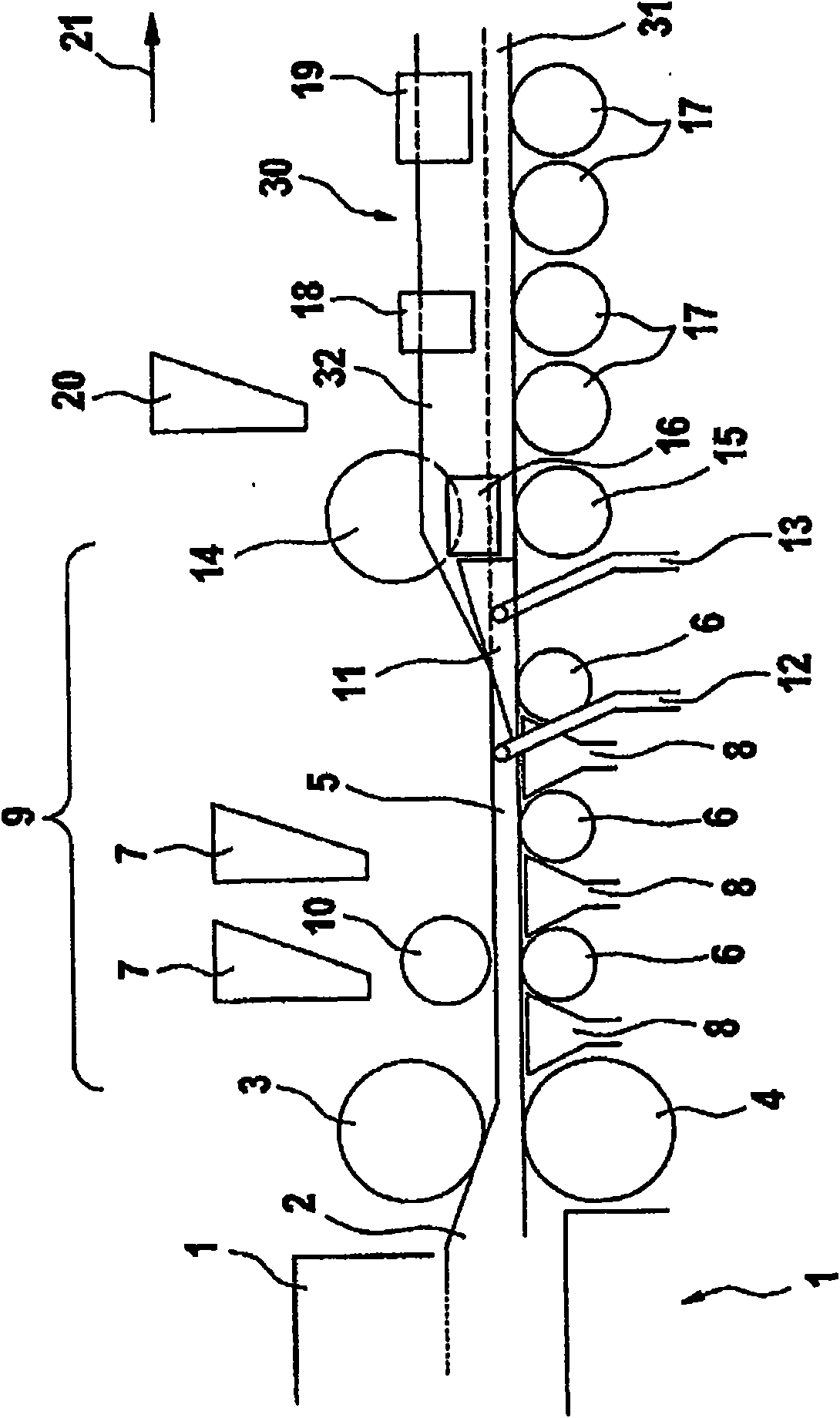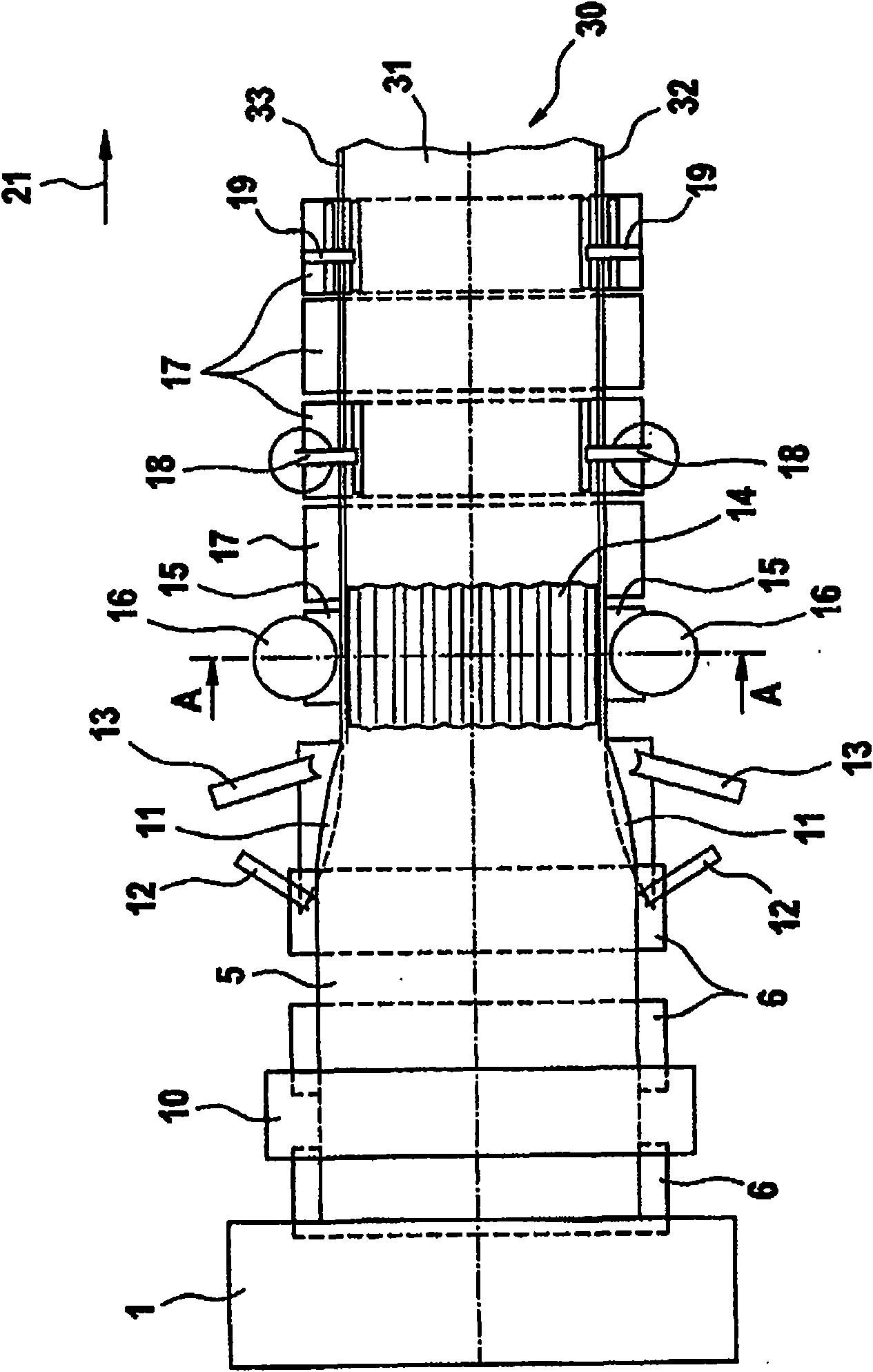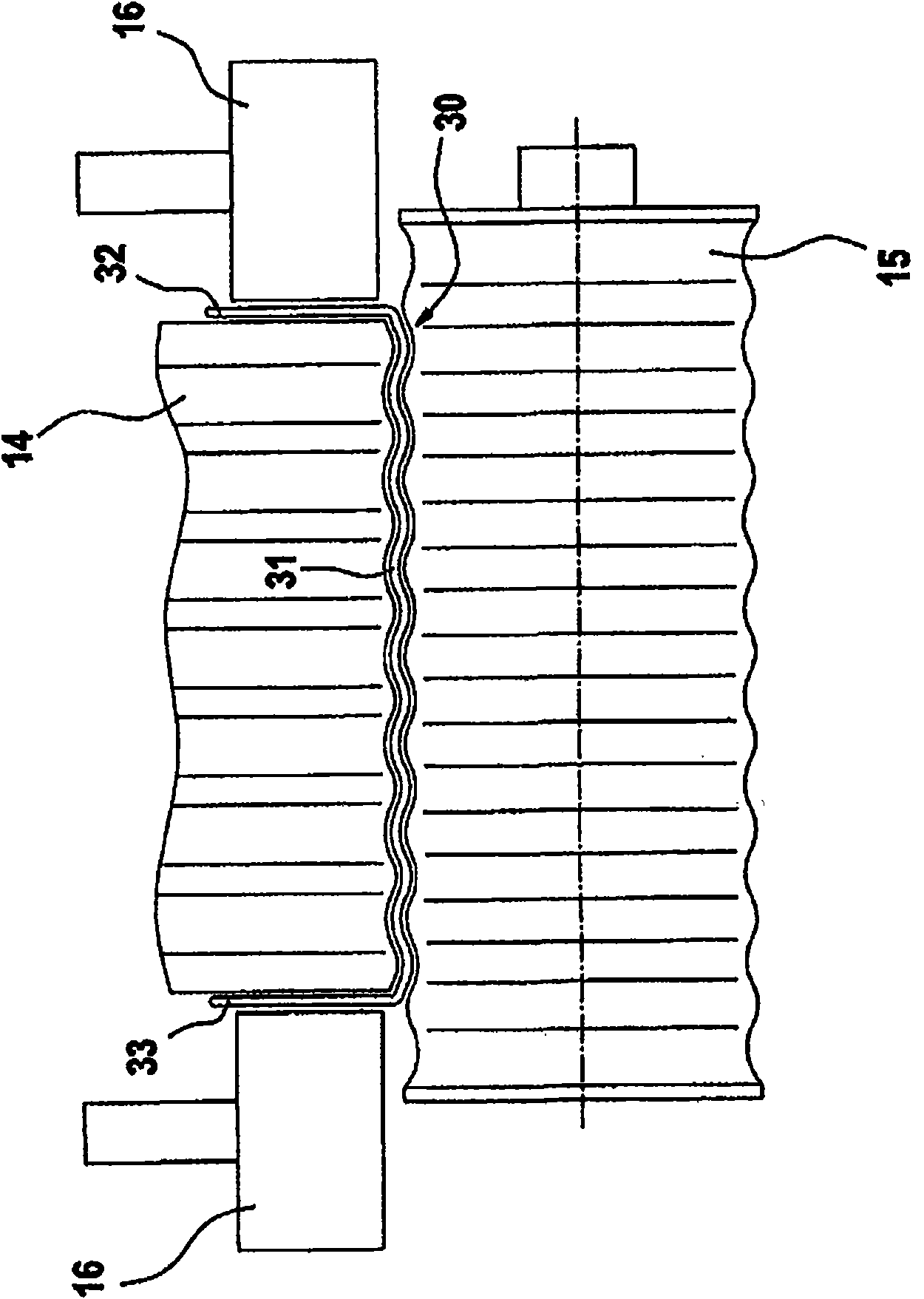Process and device for the production of channel-section glass elements, channel-section glass element and its use
A groove-shaped section, glass technology, applied in glass manufacturing equipment, glass molding, glass rolling, etc., can solve problems such as reduced possibility
- Summary
- Abstract
- Description
- Claims
- Application Information
AI Technical Summary
Problems solved by technology
Method used
Image
Examples
Embodiment Construction
[0075] figure 1 A side view showing an embodiment of the inventive apparatus for the production of channel-section glass elements, while figure 2 A plan view of the device is shown.
[0076] The two cylindrical introduction rolls 3, 4, in which the two cylindrical introduction rolls 3, 4 are arranged to produce glass, have the same diameter and are arranged one above the other, leaving a nip of approximately constant width Standard design of melt 2 at the exit of glass melting furnace 1, which is in figure 1 , 2 shown only in general terms. A generally flat but still flexible glass ribbon 5 of predetermined thickness can be made (introduced from the melt) by means of the introduction rolls 3 , 4 . The lower introduction roll 4 has an irregular surface structure (pattern) transferred to the lower surface of the glass ribbon 5 .
[0077] The glass melt 2 of standard soda lime silicate glass has a temperature of the order of about 1100° C. in front of the introduction rolls...
PUM
 Login to View More
Login to View More Abstract
Description
Claims
Application Information
 Login to View More
Login to View More - R&D
- Intellectual Property
- Life Sciences
- Materials
- Tech Scout
- Unparalleled Data Quality
- Higher Quality Content
- 60% Fewer Hallucinations
Browse by: Latest US Patents, China's latest patents, Technical Efficacy Thesaurus, Application Domain, Technology Topic, Popular Technical Reports.
© 2025 PatSnap. All rights reserved.Legal|Privacy policy|Modern Slavery Act Transparency Statement|Sitemap|About US| Contact US: help@patsnap.com



